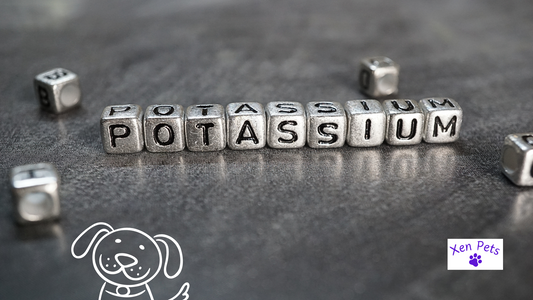Submissive dog behaviors are often misunderstood and even punished.
Dogs show submissive behaviors when they feel insecure or anxious. These behaviors include cowering, hiding, tail-tucking, and laying on their backs.
While these behaviors may seem docile and unassertive, they’re actually a dog’s way of showing respect, trust, and a willingness to avoid conflict.
It’s important to recognize these behaviors in your dog, so you can respond in a positive and encouraging way.
Punishing a dog for exhibiting submissive behaviors can lead to further anxiety and even aggression.
Instead, you should praise your dog for showing these behaviors, and help them build confidence through positive reinforcement training.
10 Submissive dog behaviors
By understanding the various forms of submissive behavior and how to encourage and interpret them, dog owners can build stronger bonds and their dogs lead happy, healthy lives.
Let's take a look at 10 examples.
1. Smiling and grinning

Smiling or grinning is an example of submissive behavior in dogs. It may seem cute and harmless, but understanding this behavior can prevent misunderstandings between you and your pet.
When dogs feel insecure or want to show submission to a dominant figure, they may show their teeth in what seems like a smile.
It's crucial to remember that your dog is not actually happy, but rather trying to communicate their feelings.
2. Licking another dog's snout

While it may seem strange or even gross to us, licking can be a sign of submission and respect in the dog world.
3. Lowered body posture
Lowered body posture, meaning the dog is standing with their head and tail low to the ground, is a classic example of a submissive demeanor.
4. Lip licking

Lip licking is a sign that your dog is feeling submissive or anxious and is trying to alleviate their stress.
5. Exposing their belly
The classic belly exposure is often seen when a dog is confronted by a more dominant canine.
As caregivers, it's important to understand that when our own dog does this, it's their way of communicating that they mean no harm, and in fact, they're seeking reassurance and protection.
6. Averting gaze (Avoiding direct eye contact)
Submissive dogs will often avoid eye contact.
This behavior can be a sign of anxiety or fear. It's crucial to provide a supportive and calm environment for your dog and work on building their confidence through training and positive reinforcement.
When interacting with a submissive dog, avoid looking directly into their eyes and instead offer gentle words and reassuring gestures.
7. Lowered tail

One common signal that a dog may be feeling submissive is when they lower their tail.
This can be an indication that the dog is feeling anxious or uncertain in a situation, or that they’re trying to communicate a sense of respect or subordination towards another animal or human.
If you notice your dog repeatedly lowering their tail, try to understand why they might be feeling this way and adjust their surroundings accordingly.
8. Submissive urination
Submissive urination in dogs is a common issue that often goes unaddressed, but it is important to understand what it is and how to deal with it.
It occurs when a dog is overly excited, anxious or even scared in response to a human or another dog.
The dog will immediately release urine as a sign of submission. Although it can be frustrating for pet owners, it is important to approach the issue with patience and understanding.
9. Ears flattened

One common sign of submission is when a dog flattens their ears against their head.
This can occur in a variety of situations, such as when meeting a new dog or when being scolded by their owner.
10. Crouching
One common behavior is the act of crouching or lowering their posture as a sign of submission.
This action can happen for a variety of reasons in dogs, whether they're feeling overwhelmed or just showing deference to their pack leader.
Bottom line
Submission and dominance in dogs are communication behaviors, not personality traits.
These behaviors are expressed through body language and relate to the dog's relationship with others. Dominance exists only when the dog voluntarily offers submission.
It's important to note that submission is not the opposite of aggression. Aggressive behavior is often driven by fear and is not necessarily connected to dominance.









